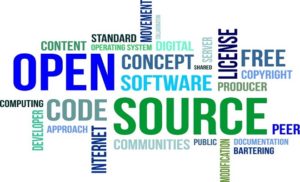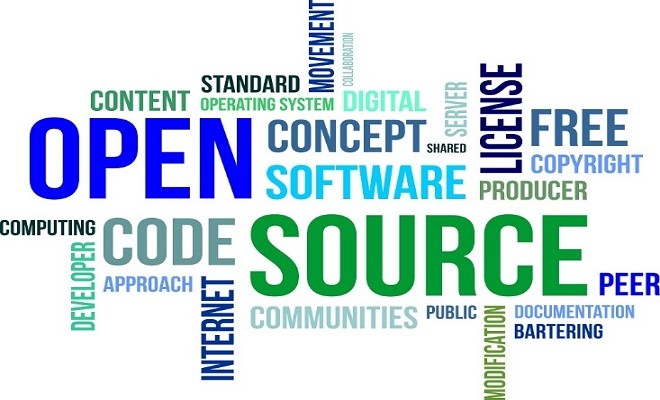Several open source tools are providing new strength to these technologies for their continued growth
By Ramakrishnan Ramanathaiah

IoT, data mining, machine learning and associated technologies are terms which group together a very wide array of technologies which are advancing thanks to techniques emerging in a wide range of disciplines such as statistics, maths and engineering. These technologies are proving very important as they increase productivity by helping in the automation of tasks and the prediction of events. Machine learning for instance can be used in IoT network load forecasting and in targeted advertising.
Major impacts of IoT
IoT is becoming a very important area in industry as advances are pushing the boundaries and opening up many avenues for the use of these technologies in a broad range of areas. As an example, there is an increasing trend of achieving cost effective deployment and real time monitoring of IoT networks by coupling the IoT network with cloud analytics. This enables IoT networks to be deployed quickly and cheaply in a wide range of environments. This is just one example of advances in the field that are starting to have major impacts in industry.
Another big advance which is changing the way IoT technologies are being used is the advent of 5G technologies. Due to the fact that 5G networks usually have much lower latencies (i.e. lower delays), IoT networks are currently seeing advances into many other fields that require very low latency communication such as in the healthcare field. In this setting re- search work is underway to deploy IoT wireless networks in hospitals so as to enable remote surgeries. A remote surgery is when a doctor carries out an operation on a patient via the internet with the help of an instrumented robotic arm and a low latency internet connection. In fact the first 5G remote surgery was carried out successfully on an animal in January 2019.
Data Science and Machine Learning coalition with IoT
In other allied areas such as Data Science and Machine Learning, there are also advances there that are of great interest to industry. IoT and Data mining are typically used jointly to address a common problem. An IoT network first senses data and transmits it via a low latency wireless connection but there needs to be logic located somewhere that takes that data and extracts useful information out of it. Advances in data mining span a wide variety of domains, such as the faster processing of the data, the more efficient processing of data, better information retrieval etc.
Machine learning refers to a particular type of statistical analysis so it fits well with data mining and IoT. With machine learning the main objective in the vast majority of cases is to use data to make predictions. So for instance in supervised machine learning a model would be first trained by feeding it inputs and their corresponding outputs. After this phase the algorithm then has to infer other outputs using only inputs. These forecasts can then be used to inform business decisions. So when used in this manner the techniques are quite similar to those used in Data mining. Advances in this field therefore have direct applications in IoT (as IoT networks are a source of loads of data) and in data mining. Advances as of late involve the increased utilisation of a state of the art techniques such as deep learning to improve prediction performance in complex high order situations. These techniques are driving a lot of the modern technologies that are coming out today such as Autonomous Vehicles and Advertising Analytics
From the past till now
In the past in order to deploy a very large IoT network one had to have a physical server acting as a computer to receive the data gathered from the sensor devices (via a gateway) and then develop algorithms on the server that try to extract useful information from the data by implementing and running standard analytical techniques such as pattern recognition algorithms to detect anomalies in sensor network. The server would then also need to be secured so malicious entities would not get access to confidential network information. In a modern IoT network and with the help of ever improving IoT support in cloud platform, this kind of network can be deployed by a company fairly easily using cloud tools such as an open source Apache Cloud Stack based platform. The platforms reduces implementation complexity by automating the data retrieval and analytics process and providing the IoT deployer the flexibility to manage the IoT network securely and reliably from anywhere.
Open source tools for handling large data
If one wants to handle large amounts of data directly, one can use an open source big data platform such as Hadoop. This allows the user to efficiently handle large amounts of data and allows the user to develop any statistical and machine learning algorithms they wish to process the data with. The data would need to be sourced from some server which is receiving information form the IoT network. This could be something like an CloudStack cloud application or could be a self developed application running on a self serviced server. The right tool for the job depends on the amount of data that needs to be handled and the type of analytics that one wants to perform on the data.
In order to use data science techniques on data that has been collected by IoT devices one can use open-source cloud computing platforms. Open source platforms are platforms whose underlying code is freely available for use and inspection by anyone. Open-source platforms are completely free to use, unlike proprietary platforms such as the SAP cloud platform. In order to deploy an Open-source platform such as OpenStack, an end user has to have access to a server in which to run the Open stack software. This server is commonly hosted in the cloud with a vendor such as Amazon web services or google compute. So the end user would rent computing resources from a provider such as Amazon Web Services (AWS) and then they would run the open-source platform using the computing resources they have rented.
There are also a wide range of open-source software’s that a user can use on top the platform itself in order to perform analytics such as the Knime Cloud Analytics Platform and the BIRT open source analytics tools. These tools are similar to the analytics tools that one would find on a proprietary platform such as the SAP platform in that they allow a user to perform analytics on any data that has been collected by an IoT device and allow the user to use the result of that analysis for any business purpose that they choose.
Ramakrishnan Ramanathaiah is the Director – SAP Practices at Miracle Software Systems, a US based IT solutions firm. He has nearly two decades of hands-on experience in providing systematic and scientific IT solutions and has received lifetime Achievement Award, Global Outreach Education Award Recipients 2019 for his contribution in the IT domain.
His specialization lies in various SAP solutions and programming platforms such as ABAP, R and Python.









